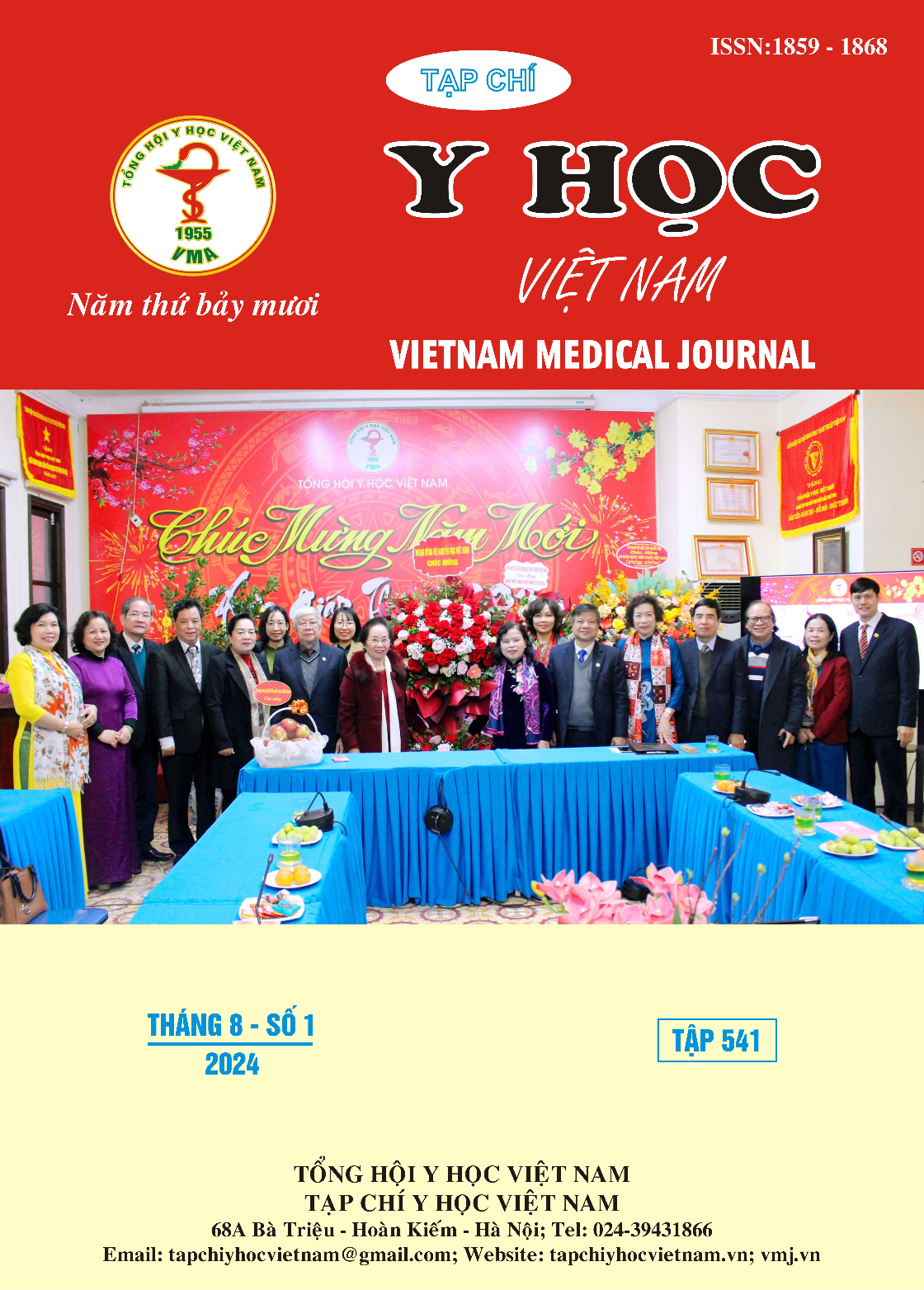EVALUATE THE EFFECTIVENESS AFTER TREATMENT OF USING THE LEEP METHOD FOR HIGH-GRADE CERVICAL LESIONS
Main Article Content
Abstract
Objective: To evaluate effectiveness after treatment of using the LEEP method for high-grade cervical lesions. Methods: This was a cross-sectional study with the participation of 108 patients classified as having high-risk cervical lesions. These patients were undergoing the LEEP procedure treatment at the Department of Voluntary Medical Examination for Early Detection of Cancer, K Hospital. Study time was from August 2022 to February 2023. Results: Before LEEP treatment, people under 46 years old had higher proportion in the group with abnormal PAP test results. The rate of patients with HPV test results as high risk and abnormal in the PAP group with abnormal cells was higher than in the normal HPV test group. Patients with abnormal PAP test results had a higher percentage of malignant pathologic results than other groups. After LEEP treatment, there was no difference between patient characteristics and PAP test results. The proportion of patients whose PAP results were HSIL and carcinoma before surgery was higher than after LEEP treatment. In addition, the percentage of patients with normal or inflammatory PAP results after LEEP treatment was nearly 3 times higher than before treatment. Conclusion: In conclusion, our study had shown evidence that after LEEP treatment, patients have better progress than before treatment.
Article Details
Keywords
Related factors, high risk, cervical lesions, LEEP
References
2. Wright T.C., Stoler M.H., Sharma A. và cộng sự. (2011). Evaluation of HPV-16 and HPV-18 genotyping for the triage of women with high-risk HPV+ cytology-negative results. Am J Clin Pathol, 136(4), 578–586.
3. Nguyễn T.Q. và Nguyễn T.B.P. (2021). Đặc điểm nhiễm HPV nguy cơ cao ở các tổn thương bất thường cổ tử cung và ung thư cổ tử cung tại Bệnh Viện K. VMJ, 509(2).
4. Frega A., Sesti F., De Sanctis L. và cộng sự. (2013). Pregnancy outcome after loop electrosurgical excision procedure for cervical intraepithelial neoplasia. Int J Gynaecol Obstet, 122(2), 145–149.
5. Lâm Đức Tâm (2017), Nghiên cứu tỷ lệ nhiễm Human Papilloma virus, một số yếu tố liên quan và kết quả điều trị các tổn thương cổ tử cung ở phụ nữ thành phố Cần Thơ, Luận án Tiến sĩ Y học, Đại học Huế - Đại học Y-Dược, Huế.
6. Davis-Dao C.A., Cremer M., Felix J. và cộng sự. (2008). Effect of cervicitis on visual inspection with acetic acid. J Low Genit Tract Dis, 12(4), 282–286.
7. Khuakoonratt N., Tangjitgamol S., Manusirivithaya S. và cộng sự. (2008). Prevalence of high grade squamous intraepithelial lesion (HSIL) and invasive cervical cancer in patients with low grade squamous intraepithelial lesion (LSIL) at cervical pap smear. Asian Pac J Cancer Prev, 9(2), 253–257.
8. Khoa P.H., Hạnh C.H., Quang N.T. và cộng sự. (2021). Đánh giá kết quả điều trị tổn thương tân sản nội biểu mô vảy độ cao cổ tử cung (HSIL) bằng kĩ thuật LEEP. Journal of 108 - Clinical Medicine and Phamarcy.
9. Manchanda R., Baldwin P., Crawford R. và cộng sự. (2008). Effect of margin status on cervical intraepithelial neoplasia recurrence following LLETZ in women over 50 years. BJOG, 115(10), 1238–1242.
10. Quek S.C., Lim B.K., Domingo E. và cộng sự. (2013). Human papillomavirus type distribution in invasive cervical cancer and high-grade cervical intraepithelial neoplasia across 5 countries in Asia. Int J Gynecol Cancer, 23(1), 148–156.


